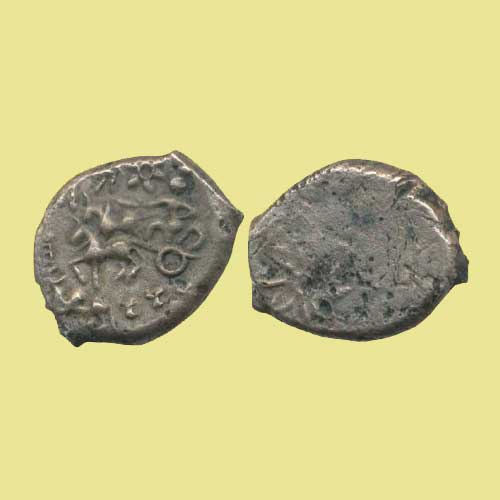Past on Wheels: Evidences of Chariots in India
2018-06-05 Tue
For the first time in the Indian sub-continent, burial pits have been found with chariots that date back to the Pre-Iron Age. This recent discovery of three chariots found during a trial excavation in Sanauli village near Baghpat, Uttar Pradesh has opened the flood gates for research opportunities into India’s past. Right from the dating of Mahabharata to the origin of horses, wheels and chariots in the Harappan age, these new findings are probing the Indian historians to take a fresh look into our past.The earliest chariot remains that have been previously found were at Atranjikhera (350 - 50 BCE). Now these new discoveries will push the dates of the use of chariots in India further back by centuries. The proving of new theories and fixing of the dates is best left to the experts. For now let’s wheel past the ages and trace the evidences of chariots in India.
A “Ratha” (chariot) is a Sanskrit term for a spoked-wheel cart. For over thousands of years chariots have rolled through the Indian lands inspiring and instigating the human imagination in art, architecture and religion.
We find evidences of model clay carts and wheel types from early and mature Harappa period. There are a few depictions of chariots among the petro glyphs in the sandstone of the Vindhya mountain range too. The toy chariot found in Diamabad (Later Harappa c. 2300-1000 BC) was one of the earliest known evidence of chariots in India.
Further, chariots have being prominently mentioned in the Rigveda with most of deities in the Hindu pantheon portrayed as riding in them. Along with detailed mentions of different types of “Rathas” in Rigveda, other Vedas, Puranas and the epics of Ramayana and Mahabharata have ample references to kings fighting on Rathas.
A ‘Ratha’ had become such an integral part of people's life, and riding it was considered as such an acclaimed art that the most ace warrior was often called as a "Maha-Rathi". The names of kings too ended with Ratha. For eg- Dasharatha, Ashtiratha, Bhagiratha, etc. Spiritually, the human body was regarded as a “ratha”, a chariot and the mind its “sarthi”, the charioteer.
The Rathas have also inspired the construction of temples and we have many examples of chariot temples in India. The best example being the Konark Sun temple in Odisha! These Indian chariot temples have been a source of attraction, not only as a place of worship but also as architectural marvels. Their imposing towers, intricate carvings and massive sizes were a result of a gradual evolution.
With the Rathas decorating many of our architectural styles, it won’t be a surprise to find them on our coins too! Uninscribed coins from the pre-Satavahana era found mostly in Maharashtra’s Vidarbha and Nashik region have horse drawn chariots on their obverse.
The coin depicted in the image is a Pre-Satavahana period uninscribed coin found in Nashik region. This 3.63 g Bronze Unit features on its obverse a chariot drawn by two horses to left, the charioteer seated with left hand on his waist and holding whip in the right. A bull to left with two small taurine symbols behind it at bottom, and a six petal flower symbol at top, tree in railing partially seen in front of the horses. On the reverse it depicts a eight petal flower symbol within a double lined square box.
These chariots remind us of the familiar images of the horse-drawn carriages from our favourite mythological shows. The ones found in the burial pits at Sanauli have given new dimensions to our history. We can say that India too had Pre-Iron Age chariots along with our contemporary cultures. A lot has to be studied and researched. Till then why don’t we just bask in the glorious satisfaction of having found something immensely important!
Image Courtesy: Todywala Auctions
Latest News
-
Gold Pagoda of Vijaynagar Empire King Deva Raya I
2024-04-10 WedKing Deva Raya I of the Vijayanagara Empire was a patron of Kannada literature and architecture. He ...
-
Silver Denarius of Septimus Severus
2024-04-05 FriLucius Septimius Severus served as the Roman emperor from 193 to 211 AD. Severus sat on the throne o...
-
Extremely rare 'Malaharamari' type Gold Gadyana of King Guhalladeva-III Sold for INR 611000
2024-04-03 WedTribhuvanamalla, also known as Guhalladeva III, was the ruler of the Kadamba dynasty. His reign coin...
-
90 Years of RBI
2024-04-02 TueOn 1st April, PM #Modi unveiled a special commemorative coin marking 90 Years since the foundation o...
-
Silver Denarius of Julia Mamaea
2024-04-02 TueJulia Avita Mamaea, a Christian Syrian noblewoman, was the mother of Roman Emperor Alexander Severus...

